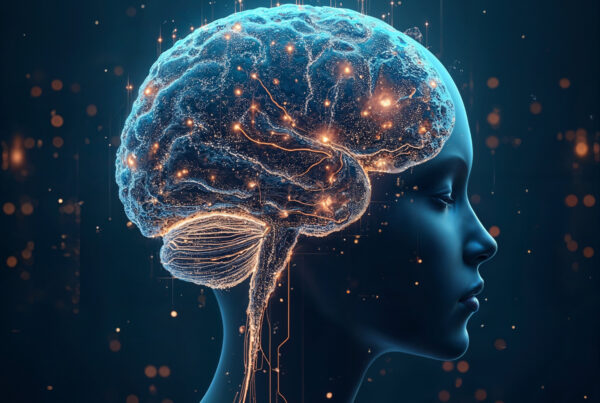In the study Ketamine for Treatment-Resistant Mood Disorders, researchers underscore a pivotal turning point in psychiatric treatment. This body of work highlights how ketamine—a medication originally developed as an anesthetic—has emerged as a fast-acting agent capable of relieving symptoms of major depressive disorder (MDD) and bipolar depression, particularly in individuals who have not responded to traditional therapies.
Treatment-resistant depression (TRD) affects nearly one-third of patients diagnosed with MDD. Standard antidepressants can take weeks to show results and often fail to produce full remission. The need for new approaches has never been more pressing, and ketamine has emerged as a beacon of hope for patients and clinicians alike.
The Urgency of Addressing TRD
Patients with TRD face prolonged suffering, functional decline, and elevated suicide risk. They often endure multiple medication trials with diminishing hope. In this context, ketamine’s ability to deliver symptom relief within hours—not weeks—is nothing short of revolutionary. Its impact is not limited to mood alone; reductions in suicidal ideation have been observed within 90 minutes of administration.
Ketamine’s use marks a departure from traditional serotonin-targeting therapies. Instead, it acts on the glutamatergic system, specifically N-methyl-D-aspartate (NMDA) receptors, opening new neurological pathways to healing.
Rapid, Yet Temporary Relief
The research presents strong evidence for ketamine’s rapid but short-lived antidepressant effects following a single intravenous infusion. This characteristic raises questions about optimal dosing schedules, long-term safety, and how best to maintain the initial improvements. Nonetheless, for individuals facing acute depressive crises or suicidal ideation, the short-term benefits can be life-saving.
The safety profile of ketamine in these studies is reassuring. When administered by trained medical professionals in a controlled setting, adverse effects are typically mild and transient—dizziness, mild dissociation, or increased blood pressure. There were no serious adverse events reported in most trials.
Broader Implications for Mood Disorders
 While the spotlight often shines on MDD, ketamine has also demonstrated efficacy in bipolar depression, another notoriously hard-to-treat condition. The study supports the idea that ketamine is not merely a stopgap, but part of a new class of rapid-acting antidepressants poised to redefine psychiatric care.
While the spotlight often shines on MDD, ketamine has also demonstrated efficacy in bipolar depression, another notoriously hard-to-treat condition. The study supports the idea that ketamine is not merely a stopgap, but part of a new class of rapid-acting antidepressants poised to redefine psychiatric care.
Ketamine’s effects go beyond immediate symptom relief. It is believed to restore disrupted neural circuits by enhancing synaptic plasticity. Preclinical studies suggest this mechanism is linked to increased brain-derived neurotrophic factor (BDNF) and the activation of the mTOR pathway, essential for neurogenesis and cognitive restoration.
Clinical Considerations
To implement ketamine treatment responsibly, several factors must be addressed:
- Patient selection: Ideal candidates are those with clearly defined TRD or acute suicidality.
- Route of administration: IV ketamine remains the gold standard, but alternatives like intranasal esketamine are gaining traction.
- Monitoring protocols: Blood pressure, mental status, and dissociative symptoms should be monitored during and after treatment.
- Maintenance strategies: Research is ongoing into repeated dosing and adjunctive therapies to extend benefits.
Given the increasing use of ketamine and the pending widespread availability of esketamine, evidence-based guidelines are crucial to prevent misuse and maximize therapeutic gain.
Looking Ahead: A Transformative Moment
This study serves as both validation and inspiration. It validates ketamine’s clinical potential and inspires a new generation of psychiatric research focused on rapid, effective, and biologically novel interventions. Ketamine is not the final answer, but it opens the door to a reimagined treatment paradigm—one that prioritizes speed, neuroplasticity, and personalized care.
As further data emerge on long-term use, alternative delivery methods, and combination strategies with psychotherapy or pharmacological agents, ketamine will continue to shape the landscape of mental health treatment.
References
- Aan Het Rot M, Zarate CA Jr, Charney DS, Mathew SJ. Ketamine for depression: where do we go from here? Biol Psychiatry. 2012;72(7):537–547. https://doi.org/10.1016/j.biopsych.2012.05.003
- Sanacora G, Frye MA, McDonald W, et al. A consensus statement on the use of ketamine in the treatment of mood disorders. JAMA Psychiatry. 2017;74(4):399–405. https://doi.org/10.1001/jamapsychiatry.2017.0080
- Newport DJ, Carpenter LL, McDonald WM, et al. Ketamine and other NMDA antagonists: early clinical trials and possible mechanisms in depression. Am J Psychiatry. 2015;172(10):950–966. https://doi.org/10.1176/appi.ajp.2015.15040465
- Wilkinson ST, Toprak M, Turner MS, et al. A survey of the clinical, off-label use of ketamine for psychiatric disorders. Am J Psychiatry. 2017;174(7):695–696. https://doi.org/10.1176/appi.ajp.2017.17020239
Feder A, Parides MK, Murrough JW, et al. Efficacy of intravenous ketamine for treatment of chronic PTSD: a randomized clinical trial. JAMA Psychiatry. 2014;71(6):681–688. https://doi.org/10.1001/jamapsychiatry.2014.62




